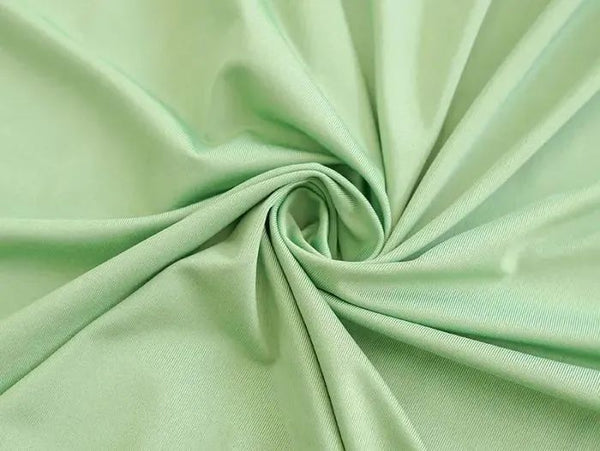
We often see the figure of knitted fabrics in the garment, home textile and lining industry, so do you really know this familiar partner? And how much do you know? In this writer's impression, knitted fabrics are soft and moisture-absorbing, just like the famous poet ValzhynaMort gives people an ebullient and clear feeling. Today we will analyze the knitted fabrics in the industry!
PART 1 What is knitted fabric?
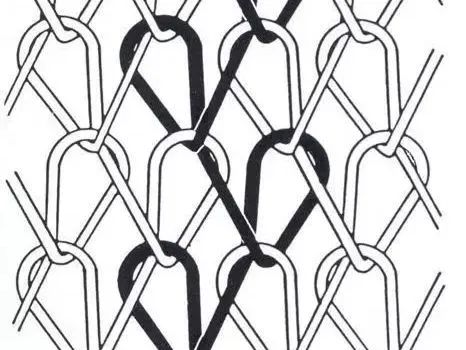
The fabric formed by the yarn knitting needles, knitted fabric is both the use of knitting needles to bend the yarn into a circle and mutual series set and the formation of the fabric. The difference between knitted fabric and woven fabric is that the form of yarn in the fabric is different. Knitted fabrics are divided into weft knitted fabrics and warp knitted fabrics, widely used in clothing fabrics and lining, home textiles and other products, loved by the majority of consumers.
PART 2 What are the common knitted fabrics?
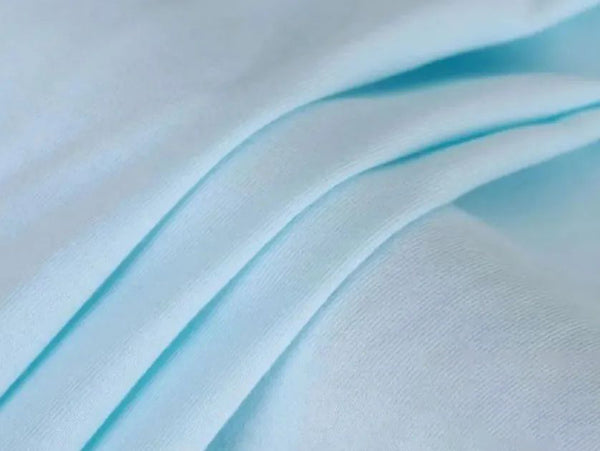
Sweat cloth is composed of continuous loop-forming tissue, and the front grain is clearer than the back grain, so it is easy to identify. The cloth surface is smooth, the grain is clear, the texture is fine, the feel is smooth, the longitudinal and transversal have good extensibility, and the transversal is more than the longitudinal extensibility. Moisture absorption and breathability is good, but there is dispersion and rolled edges, and sometimes the phenomenon of skewed coils.
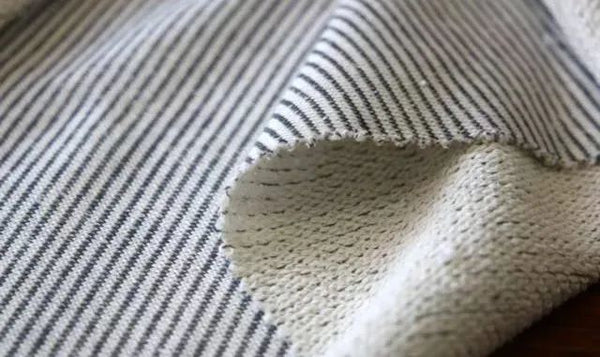
Sweatshirt cloth is a kind of knitted cloth, called fleece after brushing. this kind of knitted cloth mostly uses displacement type mat yarn weaving, so it is called displacement cloth or sweatshirt cloth. Some places are called terry cloth, some places are called fish scale cloth, many varieties, (fish scale cloth, because the back of this cloth is terry, some look like fish scales, so the name) gram weight is generally between 190g / M2-350g / M2.

Ribbed knit is a knitted fabric that consists of a yarn that forms loops in longitudinal rows on the front and back in sequence. Ribbed knitted fabrics have the dispersion, hemming, and extension of plain fabrics, as well as greater elasticity. 1x1 ribbing looks very similar to plain fabrics, but ribbing has a looser structure, is more elastic, and is generally not divided between the front and back. While other structures of ribbing such as 2x2, 2x1 structure, etc. are easy to distinguish from other fabrics due to the special nature of their structure.
Roman cloth
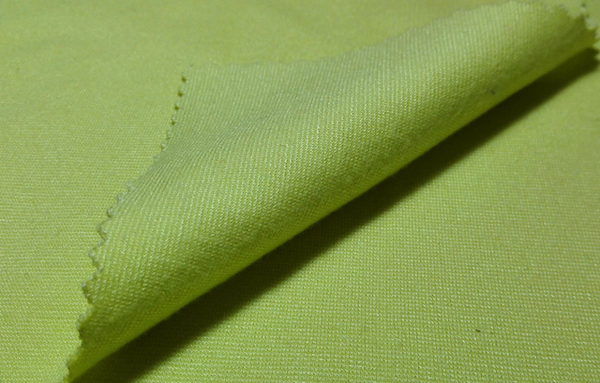
Roman cloth is a kind of knitted fabric, weft knitting, double-sided big round machine to do. Also called Pan Yang Roman cloth, commonly known as chicken cloth. Roman cloth is four-way a cycle, the cloth surface is not ordinary double-sided cloth flat, slightly slight and not too regular horizontal stripes. Fabric horizontal and vertical elasticity are better, but the horizontal stretch performance is not as good as double-sided cloth, moisture absorption. Used in the production of intimate apparel, breathable, soft, comfortable to wear.
PART 3 Features of knitted fabrics
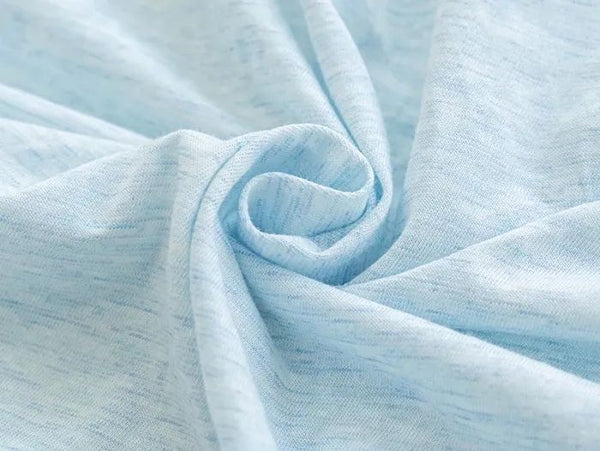
(1) Stretchability. Knitted fabric is made of yarn bent into a circle of mutual series of sets, coils up and down, left and right have a large expansion margin, so, with good elasticity, wearing fit with the body, comfortable and convenient, suitable for human movement when stretching, bending and other requirements.
(2) softness. Knitted clothing fabrics used in raw materials is fluffy soft, twist smaller yarn, the surface of the fabric has a layer of tiny suede, coupled with the loose-fitting porous organization composed of coils, when wearing to reduce the friction between the skin and the surface of the fabric, giving a sense of comfort and gentleness.
(3) Moisture absorption and breathability. Due to the composition of the knitted fabric coils in series with each other, so that the fabric inside the formation of numerous isolated air pockets, with good warmth and breathability. In addition, both plant and animal fibers have a certain ability to absorb moisture, especially cotton fiber, moisture absorption performance is better. So in the summer wearing cotton knitted clothing, feel cooler, no air discomfort.
(4) Wrinkle resistance. When the knitted fabric is subjected to wrinkle external force, the coil can be transferred to adapt to the deformation of the force; when the wrinkle force disappears, the transferred yarn can quickly recover and maintain the original state.
PART 4 Advantages and disadvantages of knitted fabrics
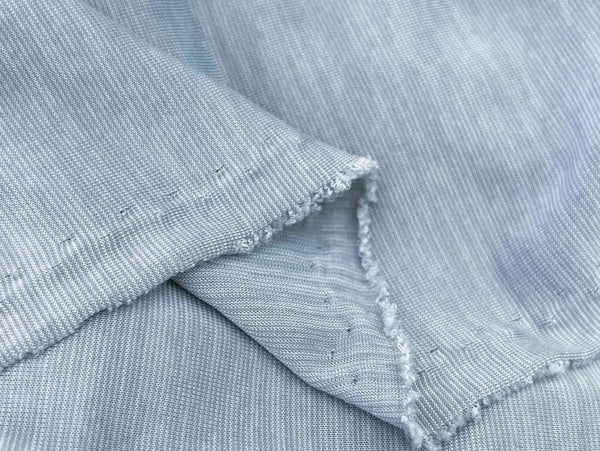
(1) The fabric is soft, drapey, warm + anti-wrinkle fabric of choice.
(2) The fabric's coil structure can be deformed, with good extension and good stretching and ductility.
(3) The fabric has large breathability and soft handfeel.
(4) The fabric is easy to contract and roll the edge, so the hem should be solved by single or double crimping.
(5) The fabric is easy to disperse and unravel, so it is easy to wear everyday.
PART 5 The difference between knit and woven

According to the current situation, knitted fabric is more elastic than woven, rich in variation, and can be seen in life as knitted mosquito nets, bed hats, wrist guards, etc. In short, it is widely used. Woven fabric pattern flat, deformation is small, the change of yarn is less, the suit prefers to use this fabric.
Stretchability-knitted fabrics>woven fabrics
Comfortable - knitted fabric > woven fabric
Warmth-Knitted>Woven
Breathability-Knitted>Woven
Abrasion resistance-Knitted < Woven
Tear strength-knitted fabrics>woven fabrics
Pilling resistance-Knitted fabrics<Woven fabrics
Dimensional stability-Knitted<Woven
This is the end of today's sharing, do you feel better understanding of knitted fabrics? --Follow me to learn more about home visit
Note: All images used in this article are from the Internet. If there are infringement issues, please contact me in time
